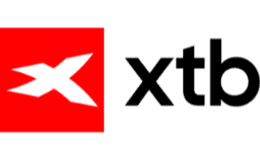
Fractional shares
Get dividend payments
Gap Inc (GPS) is a publicly traded apparel retail business based in the US which employs around 85,000 staff. Gap is listed on the NYSE and traded in US dollars.



All investing should be regarded as longer term. The value of your investments can go up and down, and you may get back less than you invest. Past performance is no guarantee of future results. If you’re not sure which investments are right for you, please seek out a financial adviser. Capital at risk.
Buying shares in just one company is generally considered a riskier bet than investing in a range of investments - AKA a "diversified portfolio". Experts generally recommend holding a mix of investments in specific assets and funds. Funds are ready-made portfolios of multiple companies' shares (potentially including Gap), and the idea is that drops in the value of one constituent company's share price might be offset by rises in others.
Gap is a major part of the NYSE, so it's included in many global funds and investment trusts, as well as tracker-style exchange traded funds (ETFs).
ETF |
Icon |
1-year performance (to Apr. '25) |
5-year performance (to Apr. '25) |
Link |
|---|---|---|---|---|
| Invesco S&P 500 ETF (SPXP) |  |
N/A | N/A | Invest Capital at risk |
| Xtrackers S&P 500 Swap ETF 1C (XSPX) | N/A | N/A | Invest Capital at risk | |
| iShares Core S&P 500 ETF USD (Acc) (CSP1) |  |
N/A | N/A | Invest Capital at risk |
| HSBC S&P 500 ETF (HSPX) |  |
N/A | N/A | Invest Capital at risk |
Review technicals and fundamentals to help you determine if now's a good time for you to invest.
View Gap's price performance, share price volatility, historical data and technicals.
The gauge below shows real-time ratings that are based on 26 popular indicators such as moving averages, for specific time periods. It's not a recommendation but is simply technical analysis that can form part of your research.
Finder might not agree with the analysis and we take no responsibility. We also give no representations or warranty on the accuracy or completeness of the information provided on this page.
All investing should be regarded as longer term. The value of your investments can go up and down, and you may get back less than you invest. Past performance is no guarantee of future results. If you’re not sure which investments are right for you, please seek out a financial adviser. Capital at risk.
Valuing a stock is incredibly difficult, and any metric has to be viewed as part of a bigger picture of overall performance. However, analysts commonly use some key metrics to help gauge value. Check out the Gap P/E ratio, PEG ratio and EBITDA.
Gap's current share price divided by its per-share earnings (EPS) over a 12-month period gives a "trailing price/earnings ratio" of roughly 14x. In other words, Gap's shares trade at around 14x recent earnings.
That's relatively low compared to, say, the trailing 12-month P/E ratio for the United States stock markets on average as of March 2025 (25.37). The low P/E ratio could mean that investors are pessimistic about the outlook for the shares or simply that they're under-valued.
However, Gap's P/E ratio is best considered in relation to those of others within the industry or those of similar companies.
Gap's "price/earnings-to-growth ratio" can be calculated by dividing its P/E ratio by its growth – to give 0.6509. A PEG ratio below 1 can be interpreted as meaning the shares are not overvalued given the current rate of growth.
The PEG ratio provides a broader view than just the P/E ratio, as it gives more insight into Gap's future profitability. By accounting for growth, it could also help you if you're comparing the share prices of multiple high-growth companies.
However, it's sensible to consider Gap's PEG ratio in relation to those of similar companies.
Gap's EBITDA (earnings before interest, taxes, depreciation and amortisation) is a whopping $1.3 billion (£984.7 million).
The EBITDA is a measure of Gap's overall financial performance and is widely used to measure a its profitability.
To put that into context you can compare it against similar companies.
All investing should be regarded as longer term. The value of your investments can go up and down, and you may get back less than you invest. Past performance is no guarantee of future results. If you’re not sure which investments are right for you, please seek out a financial adviser. Capital at risk.
Footwear stocks can be rewarding, but there are risks involved that could impact your profits.
Find out how you can invest in PrettyLittleThing, and get the latest share price updates.
Want to add highlight to the foundations of your investment portfolio with makeup stocks? Find out how to invest in makeup and the risks.
Ever wondered how to buy shares in Watches of Switzerland Group? We explain how and compare a range of providers that can give you access to many brands, including Watches of Switzerland Group.
Ever wondered how to buy shares in TJX? We explain how and compare a range of providers that can give you access to many brands, including TJX.
Find out how to buy shares in Superdry, see its share prices over the last three months and check out our must-do checklist if you’re looking to invest.
Find out how to buy shares in Sports Direct, see Sports Direct’s share prices over the last three months and check out our must-do checklist if you’re looking to invest.
We walk you through buying shares in JD Sports, giving you a look at its share price history. See our checklist for anyone looking to invest too.
Ever wondered how to buy shares in Burberry? We explain how and compare a range of providers that can give you access to many brands, including Burberry.
Thinking about buying shares in online retail giant ASOS? We explain how to do it and run through a useful checklist for anyone looking to invest.